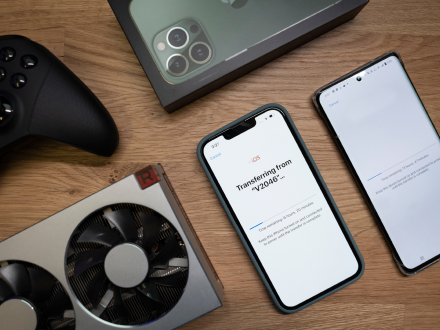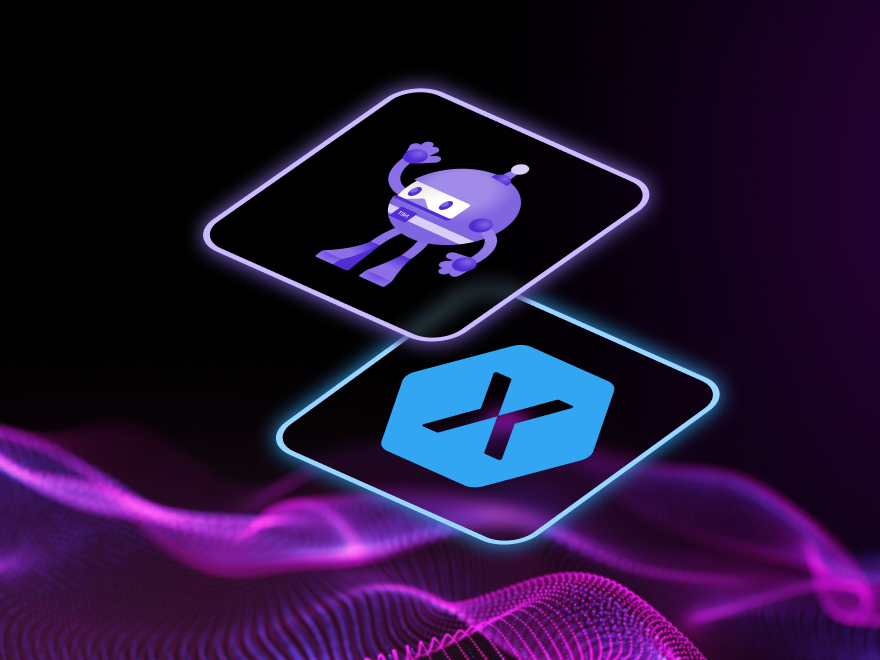Ihre Nachricht wurde gesendet.
Wir werden Ihre Anfrage bearbeiten und uns so schnell wie möglich mit Ihnen in Verbindung setzen.
Das Formular wurde erfolgreich abgeschickt.
Weitere Informationen finden Sie in Ihrem Briefkasten.

Sprache auswählen

Wir möchten hier nicht das Offensichtliche sagen, aber die moderne Welt ist vollständig digital geworden. Und während Sie mit Ihren Kollegen über Zoom sprechen, Autos mit mobilen Apps, Klimaanlagen mit Thermostaten und Türklingeln mit Heimservern kommunizieren, gibt es eine Sache, die diese Anordnung weniger effizient macht, als wir es gerne hätten.
Latenz und schlechte Verbindungen führen letztendlich zu Unzufriedenheit der Kunden mit vernetzten Produkten und Diensten.
Heute besprechen wir, wie WebRTC die Verbindung zwischen Peers verbessert und so das Benutzererlebnis steigert.
Bevor wir darauf eingehen, wollen wir zunächst den Begriff der Technologie entlarven.
WebRTC ist eine offene Echtzeit-Kommunikationstechnologie, die Datenübertragungen über das Internet optimiert und dabei niedrige Latenzzeiten und hohe Geschwindigkeiten priorisiert. Es basiert auf einer API ohne Plugins, ist hochkompatibel und wird von allen gängigen Browsern unterstützt. Für native Android- und iOS-Apps bietet eine Bibliothek die gleiche Funktionalität wie im Web und ist einfach zu implementieren. Das WebRTC-Projekt ist Open Source und wird von Branchenführern wie Apple, Google, Microsoft und Mozilla unterstützt.
Bevor es offene Protokolle gab, mussten Unternehmen proprietäre Software für Videokonferenzen entwickeln. Das bedeutete nicht nur eine große Anfangsinvestition, sondern auch, dass ein festes internes Team die Lösung unterstützen, Fehler beheben und sicherstellen musste, dass sie mit anderen Teilen des digitalen Systems des Unternehmens zusammenarbeitete.
Mit WebRTC hat sich alles geändert. Die gleiche Funktionalität steht jetzt direkt in Ihrem Browser zur Verfügung. Sie müssen nicht mehr mit umständlicher, eingeschränkter Software herumbasteln – verwenden Sie einfach einen Browser, um sich von fast jedem Gerät aus zu verbinden, und schon kann es losgehen.

CTO bei Innowise
Stellen Sie sich vor, wie praktisch und effizient dies Ihre Teambesprechungen oder Kundenberatungen gestaltet – eine einfache, unkomplizierte Kommunikation ohne die üblichen Hürden.
Aber WebRTC ist nicht nur für Videokonferenzen nützlich: Die Fähigkeit, nahezu alle Daten mit geringer Latenz zu übertragen, macht es zu einer beliebten Lösung für IoT-Entwickler. In der IoT-Branche ermöglicht WebRTC Datenübertragungen mit geringer Latenz für Smart-Home-Geräte, Telemedizin-Lösungen, Versorgungsmanagement und mehr. Da diese Technologie immer verfügbarer wird und die Nachfrage wächst, suchen Unternehmen nach Möglichkeiten, Daten sicher und schnell weiterzuleiten – und viele setzen genau aus diesem Grund auf WebRTC.
Stellen Sie sich ein Szenario vor, in dem ein Arzt die Vitalfunktionen eines Patienten aus der Ferne in Echtzeit überwachen muss. Mit WebRTC können die Daten mit minimaler Verzögerung sicher übertragen werden, sodass medizinische Eingriffe rechtzeitig erfolgen können. Oder denken Sie an Smart-Home-Geräte, bei denen Video-Feeds von Überwachungskameras oder Türklingeln sofort auf Ihr Smartphone übertragen werden. Die geringe Latenz und hohe Zuverlässigkeit von WebRTC machen es zur idealen Wahl für diese Art von Aufgaben.
Benötigen Sie eine Lösung für Ihre IoT-Produkte?
Wir nutzen WebRTC, um Softwarelösungen zu erstellen, die eine stabile Leistung garantieren.
Der Hauptvorteil von WebRTC besteht darin, dass es die Peers direkt verbindet, ohne dass ein Vermittler erforderlich ist. Hier ist eine Aufschlüsselung des gesamten Datenübertragungsprozesses, die uns zeigt, wie WebRTC minimale Latenz erreicht.
Das ICE-Framework findet den besten Pfad zur Verbindung der Peers, indem es Netzwerkkandidaten (IP-Adressen und Ports) sammelt und die Konnektivität testet. ICE kann über verschiedene Netzwerkkonfigurationen hinweg arbeiten – einschließlich Network Address Translations (NATs) und Firewalls –, um diese Verbindung stabil zu halten.
WebRTC verwendet STUN-Server, um die öffentliche IP-Adresse und den vom NAT zugewiesenen Port zu ermitteln. Wenn eine direkte Peer-to-Peer-Kommunikation nicht möglich ist, werden TURN-Server verwendet, um den Media-Traffic weiterzuleiten. Dies bedeutet, dass die Verbindung auch durch NATs und Firewalls aufrechterhalten wird.
WebRTC verschlüsselt Datenkanäle und Media-Streams mit Hilfe von Datagram Transport Layer Security (DTLS) und Secure Real-time Transport Protocol (SRTP). Dadurch wird sichergestellt, dass die gesamte Kommunikation sicher und vor Abhören oder Manipulation geschützt ist.
Die GetUserMedia-API ermöglicht Web-Apps den Zugriff auf Media-Streams vom Gerät des Benutzers. Sobald die Medien abgerufen wurden, werden sie an WebRTC übergeben, das sie für die Freigabe vorbereitet. Diese Media-Streams werden dann paketiert und über das Real-Time Transport Protocol (RTP) übertragen, wobei sichergestellt wird, dass alles synchron und mit einem Zeitstempel versehen ist.
Während des Signalisierungsprozesses verhandeln die Peers die Codecs für die Kommunikationssitzung. Dadurch wird sichergestellt, dass beide Parteien die Media-Streams in einem kompatiblen Format kodieren und dekodieren können, was eine reibungslose Kommunikation ermöglicht.
Sobald die Verbindung hergestellt ist, tauschen die Peers Media-Streams direkt und ohne Zwischenserver aus. Diese Peer-to-Peer-Konfiguration ermöglicht eine Echtzeitkommunikation mit geringer Latenz – was zu einem ruckelfreien und reaktionsschnellen Benutzererlebnis führt.
Mithilfe dieser Protokolle kann WebRTC eine stabile Verbindung zwischen Peers gewährleisten, was in Fällen von Vorteil ist, in denen ein Datenaustausch in Echtzeit erforderlich ist, beispielsweise bei Videostreaming, Anrufen, Telemedizin, IoT und anderen Anwendungsfällen.
Geringe Latenz und hohe Effizienz: WebRTC macht Echtzeitkommunikation mit minimaler Verzögerung zum Kinderspiel. Seine Peer-to-Peer-Architektur ermöglicht die direkte Datenübertragung zwischen Benutzer*innen – wodurch serverbedingte Verzögerungen vermieden werden, was für Apps wichtig ist, bei denen selbst kleine Rückschläge das Benutzererlebnis beeinträchtigen können.
Integrierte Verschlüsselung: WebRTC verschlüsselt die Daten mithilfe von Protokollen wie DTLS und SRTP, um Benutzer*innen vor Data-Leaks zu schützen. Die in WebRTC implementierten Maßnahmen machen außerdem zusätzliche Funktionen überflüssig.
Kompatibilität mit verschiedenen Plattformen: WebRTC ist ein offener Standard, der von allen gängigen Webbrowsern und Betriebssystemen unterstützt wird. So können Entwickler*innen mit ihren Apps ein breiteres Publikum ansprechen, ohne sich um Kompatibilitätsprobleme sorgen zu müssen.
Anpassbar an unterschiedliche Netzwerkbedingungen: WebRTC verwendet ICE, um den besten Pfad für die Datenübertragung zu finden. Dies hilft dabei, die Leistung zu optimieren und die Verbindung in anspruchsvollen Umgebungen aufrechtzuerhalten.
Leicht skalierbar: Ob für die Anwendung im kleinen Maßstab wie private Videoanrufe oder für Implementierungen im großen Maßstab wie Live-Streaming-Events – WebRTC bietet die nötige Skalierbarkeit, um den unterschiedlichen Anforderungen gerecht zu werden.
Steigern Sie die Bindung und Zufriedenheit Ihrer Benutzer.
Mit einer zuverlässigen Verbindung wird Ihr Dienst zu einer Erweiterung ihres Alltags.
WebRTC ist eine vielseitige, blitzschnelle Lösung, die viele Unternehmen lieben und auf die andere nicht verzichten können. Hier sind einige wichtige Anwendungsfälle, in denen WebRTC glänzt:
Da WebRTC hochwertige Audio- und Videoanrufe direkt im Browser ermöglicht, müssen keine separaten Apps oder Plug-ins erstellt werden, um mit Leuten über das Internet zu sprechen. Darüber hinaus ist eine reine Browser-Konferenzlösung für den Endbenutzer viel bequemer: Er muss nur die Website aufrufen. Es muss keine Software installiert oder verstanden werden: Um andere Leute einzuladen, muss man nur einen Link senden.
Einer der großen Namen, die WebRTC verwenden, ist Google Meet. Apps wie Zoom sind zwar nativ auf der Plattform, machen es aber einfach, Einladungen über Weblinks zu senden.
Bei Innowise haben wir auch mehrere Projekte abgeschlossen, bei denen wir WebRTC zur latenzfreien Datenübertragung eingesetzt haben. In Zusammenarbeit mit einem unserer Kunden haben wir ein umfassendes Konferenztool entwickelt, das nicht nur eine stabile Verbindung während virtueller Meetings bietet, sondern auch Terminverwaltung und KI-Integration umfasst.
Beim Online-Gaming ist Lag ein gefährlicherer Gegner als das gegnerische Team. Es ist wichtig, dass die Daten und Kommunikationen im Spiel ohne Verzögerung übertragen werden, da es Sekunden sind, die über den Ausgang entscheiden.
Aus diesem Grund bauen viele Gaming-Unternehmen ihre Produkte auf Basis von WebRTC für die Datenübertragung. Cloud-Gaming-Dienste wie NVIDIA GeForce Now und von Gamern verwendete Chat-Apps wie Discord sind Paradebeispiele.
Die Fähigkeit von WebRTC, Media-Streams in Echtzeit zu verarbeiten, macht es zu einer ausgezeichneten Wahl für Video-Streaming-Apps und sorgt für ein reibungsloses und reaktionsschnelles Seherlebnis.
Bemerkenswerte Beispiele sind Netflix Party: eine Erweiterung, die WebRTC verwendet, um die Videowiedergabe zu synchronisieren und Echtzeit-Chats zwischen Zuschauern zu ermöglichen, die gemeinsam Netflix schauen. Twitch – eine beliebte Streaming-Plattform für Gamer*innen – verwendet ebenfalls WebRTC, um Zuschauern eine Echtzeit-Interaktion mit Streamern zu ermöglichen.
Auch das IoT ist ein Technologiebereich, in dem Reaktionsfähigkeit erwartet, aber nicht geschätzt wird. Nehmen wir beispielsweise Geräte wie Nest Cam: Sie nutzen WebRTC, um Daten in Echtzeit auf die Smartphones der Benutzer zu streamen, während Plattformen wie Teladoc damit Videokonsultationen zwischen Ärzt*innen und Patient*innen ermöglichen.
Eine stabile und schnelle Verbindung mit WebRTC kann das allgemeine Benutzererlebnis deutlich verbessern, indem sie sofortige Hilfe bietet, wann immer sie benötigt wird. Apps wie Zendesk und Intercom integrieren WebRTC, um Chat- und Video-Support in Echtzeit anzubieten und Unternehmen dabei zu helfen, die Probleme ihrer Kunden so schnell wie möglich zu lösen.
WebRTC trägt dazu bei, Bildung zugänglicher zu machen, und zwar durch Online-Lerntools, die WebRTC für eine qualitativ hochwertige Verbindung nutzen. Für Menschen in unterversorgten Gemeinden, in denen ein zuverlässiger Internetzugang schwer zugänglich ist, ist WebRTC eine große Hilfe.
Der Online-Bildungssektor profitiert stark von den Echtzeitfunktionen von WebRTC, die interaktive und spannende Lernerfahrungen ermöglichen. Online-LMSs wie Coursera verlassen sich auf WebRTC, um Echtzeitdiskussionen und kollaborative Lernerfahrungen anzubieten und so die Effektivität ihrer Online-Kurse zu steigern.
Kurz gesagt: Die Flexibilität und Geschwindigkeit von WebRTC machen es zu einem Muss für alle möglichen Branchen – von Kommunikation und Gaming bis hin zu IoT und Online-Bildung. Durch die Ermöglichung von Echtzeitinteraktionen verbessert WebRTC das Benutzererlebnis erheblich und erfüllt die wachsende Nachfrage nach sofortiger Konnektivität.
Egal, ob Sie Ihr Remote-Arbeits-Setup verbessern oder Gaming-Lags beseitigen möchten, WebRTC hat sich als unverzichtbare Technologie erwiesen. Die Fähigkeit, Kommunikation mit geringer Latenz und hoher Qualität direkt über Browser oder mobile Apps bereitzustellen, beseitigt viele traditionelle Verbindungsbarrieren.
Die breite Kompatibilität und einfache Implementierung von WebRTC haben es zu einer beliebten Wahl für Unternehmen in vielen Branchen gemacht. Durch die Reduzierung des Bedarfs an proprietärer Software und einer umfangreichen Serverinfrastruktur senkt WebRTC nicht nur die Betriebskosten, sondern beschleunigt auch die Bereitstellung von Echtzeit-Kommunikationsfunktionen. Seine robusten Sicherheitsprotokolle sorgen dafür, dass die Datenübertragung sicher bleibt – und gehen damit auf eines der größten Probleme der heutigen digitalen Landschaft ein.
Da die Nutzung dieser Technologie immer weiter zunimmt, wird WebRTC voraussichtlich noch mehr Wellen in der Art und Weise schlagen, wie wir uns online vernetzen und kommunizieren.












Ihre Nachricht wurde gesendet.
Wir werden Ihre Anfrage bearbeiten und uns so schnell wie möglich mit Ihnen in Verbindung setzen.

Mit der Anmeldung erklären Sie sich mit unseren Datenschutzrichtlinie